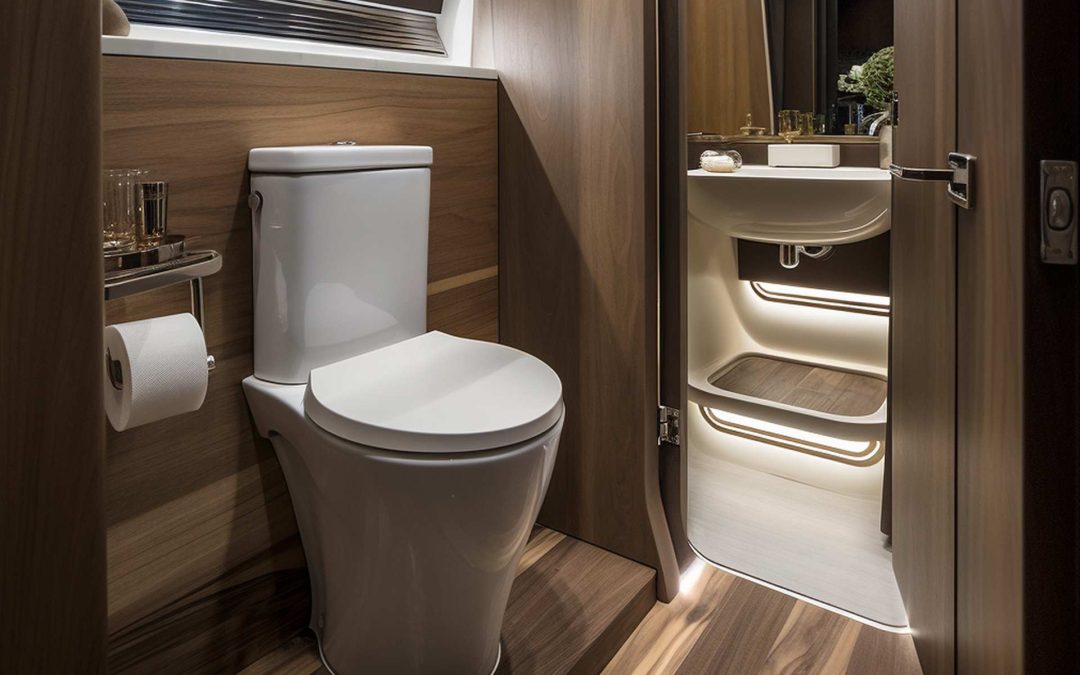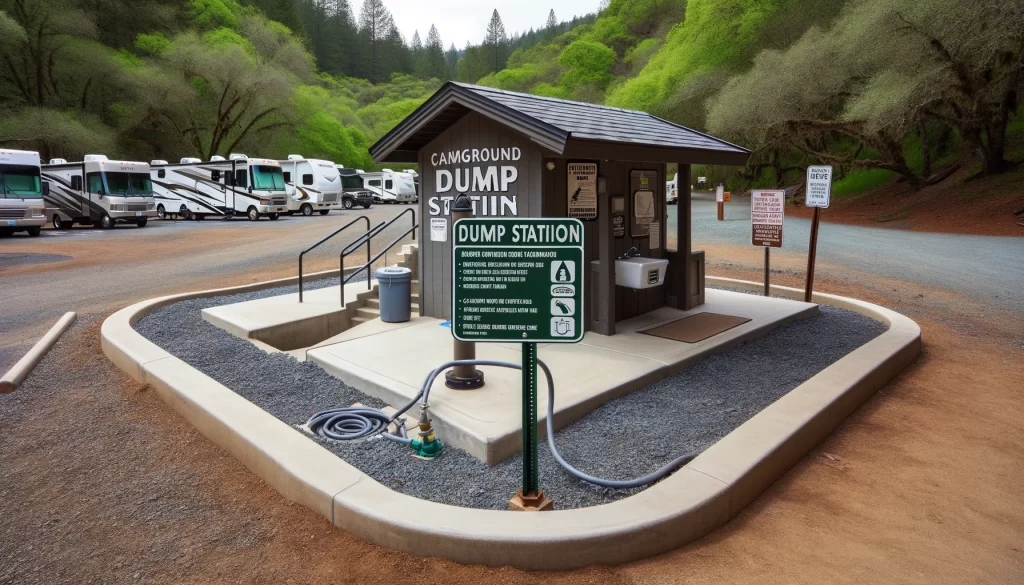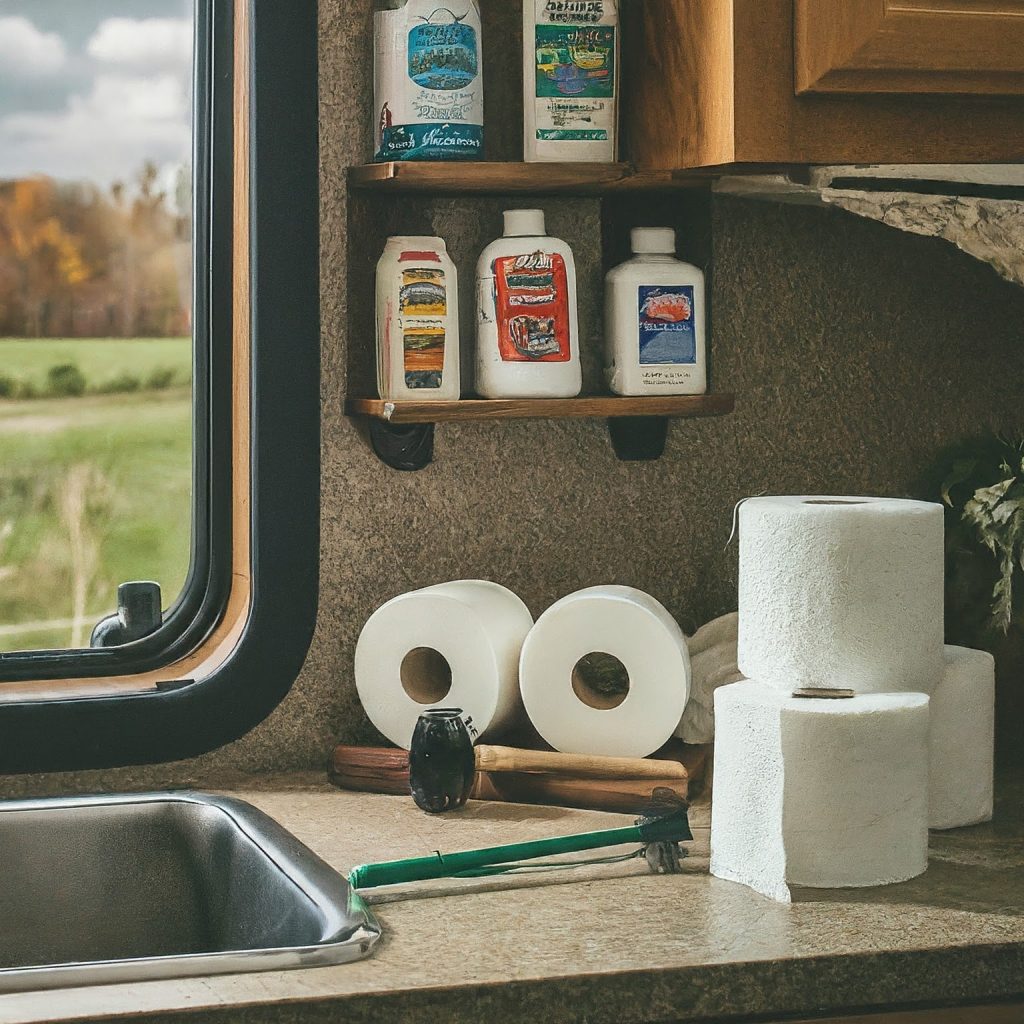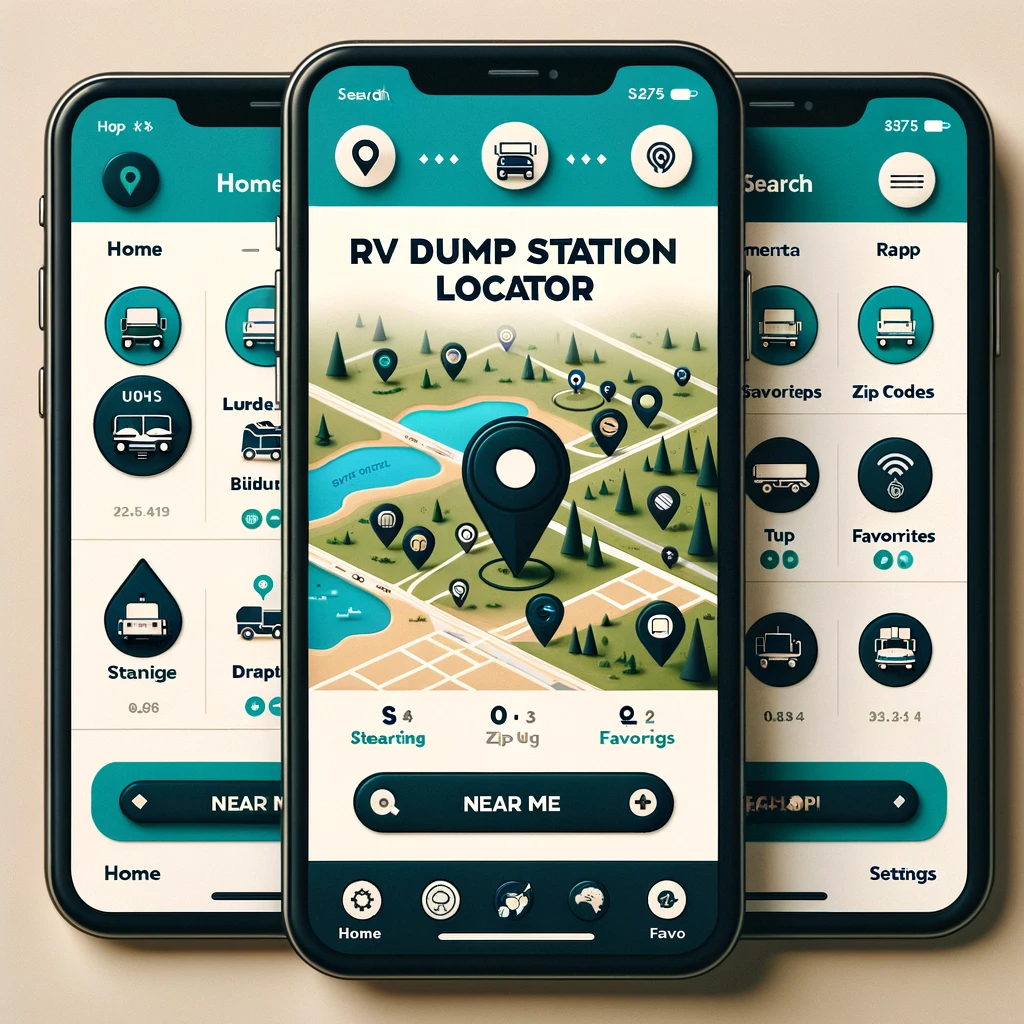Your Roadmap to a Smooth and Sanitary Journey
Ah, the RV toilet. Not the most glamorous topic, but undeniably crucial for a comfortable and hygienic RV experience. Whether you’re a seasoned nomad or a first-time camper, mastering the intricacies of your RV toilet system can make all the difference. That’s where this comprehensive guide comes in!
Written by Chuck Price, a passionate RV enthusiast with over 30 years of RV experience, this guide will equip you with the knowledge and confidence to navigate the world of RV toilets. We’ll cover everything from choosing the right type for your needs to mastering proper operation and maintenance, all while keeping sustainability and responsible waste management in mind.
So buckle up (or should we say, sit down?) and get ready to learn:
- The different types of RV toilets and their pros and cons: Gravity flush, vacuum flush, cassette, macerating…we’ll explore them all to help you find the perfect fit.
- Essential operating tips: Learn the flushing mechanisms, discover the power of RV-specific toilet paper, and understand what’s a definite “no-no” when it comes to flushing.
- Maintenance made easy: From regular cleaning to black tank care and valve maintenance, we’ll provide practical steps and helpful tips to keep your system running smoothly.
- Upgrade options for a personalized experience: Sprayers, macerator pumps, larger holding tanks…explore the possibilities to enhance your comfort and convenience.
- Strategic considerations: Learn about valve placement, discover handy dump station locator apps, and find resources for sustainable waste management practices.
Remember: This guide can’t replace professional advice. If you have specific questions or concerns, consult a qualified RV technician. But with the information and insights provided here, you’ll be well on your way to conquering the RV toilet and enjoying a worry-free adventure.
Choosing the Right RV Toilet: Your Personalized Throne Awaits
The RV toilet might not be the first thing you think of when planning your adventures, but choosing the right one can significantly impact your comfort and experience. With various options available, understanding your needs and priorities is key. Let’s explore the common types and their pros and cons to help you find your perfect match:
RV Toilet Comparison Table
| Feature | Gravity Flush | Vacuum Flush | Cassette | Macerating | Composting |
|---|---|---|---|---|---|
| Pros | Simple, affordable, widely available, easy to maintain | Powerful flush, quiet operation, residential feel, water-efficient | Compact, portable, ideal for vans, easy to empty | Powerful flush, grinds waste for efficient tank usage, residential feel | Eco-friendly, odorless operation, minimal water usage |
| Cons | Requires more water and larger holding tanks, less powerful flush | More expensive, requires professional installation, complex maintenance | Limited waste storage, requires frequent emptying, potential odor concerns | Expensive, requires electricity, complex installation | Requires ventilation, learning curve for operation, higher upfront cost |
| Ideal for: | Budget-conscious RVers, first-time owners, ample water access, infrequent use | RVers prioritizing water conservation, desiring luxury feel, powerful flush | Solo travelers, vanlifers, limited space | Larger RVs, frequent boondocking, desiring powerful flush | Eco-conscious RVers, off-grid camping, minimizing water usage |
| Water Usage: | High | Low | Medium | Medium | Low |
| Power Source: | Manual | Electric | Manual | Electric | Varies (manual or solar) |
| Cost: | Low | High | Medium | High | High |
| Maintenance: | Simple | Complex | Moderate | Moderate | Moderate |
| Weight: | Light | Heavy | Light | Heavy | Varies |
| Space Requirements: | Standard | Larger | Compact | Larger |
1. Gravity Flush Toilets:
- Pros: Simple, affordable, and easy to maintain. Widely available and compatible with most RVs.
- Cons: Require more water and larger holding tanks, leading to more frequent dumping. May not feel as powerful as other options.
Ideal for: Budget-conscious RVers, first-time owners, or those with ample water access and large holding tanks.
2. Vacuum Flush Toilets:
- Pros: Powerful flush using less water, quieter operation, and a more residential feel.
- Cons: More expensive, require professional installation, and might be complex to maintain.
Ideal for: RVers prioritizing water conservation, desiring a luxurious feel, or needing a powerful flush for specific needs.
3. Cassette Toilets:
- Pros: Compact and portable, perfect for smaller RVs or vans. Easy to empty and clean directly.
- Cons: Limited waste storage, requiring frequent emptying. May have odor concerns if not properly maintained.
Ideal for: Solo travelers, vanlifers, or those with limited space or infrequent use.
4. Macerating Flush Toilets:
- Pros: Powerful flush, grinds waste for efficient tank usage, and offers a residential feel.
- Cons: Requires electricity, expensive, and installation might involve professional help.
Ideal for: RVers with larger budgets seeking maximum convenience, powerful flushing, and a home-like experience.
Remember: Consider your RV size, water availability, budget, and personal preferences when making your choice. Consulting an RV expert or reading user reviews can also provide valuable insights.
Bonus Tip: For eco-conscious RVers, consider exploring sustainable options like composting toilets for a natural waste breakdown, water conservation, and even garden-nourishing compost! Remember, the perfect toilet balances your budget, convenience, and environmental footprint, so explore all options before choosing your throne.
RV Toilet Operation: Your Guide to a Smooth Flush
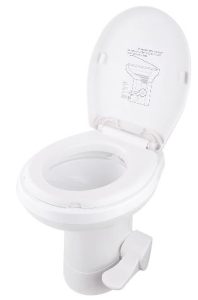
Flushing Mechanisms:
- Gravity Flush: Stomp on that foot pedal or press the lever! This releases water and opens the valve, whisking your waste away.
- Vacuum Flush: Simply press the button, and the powerful vacuum system takes care of the rest. Remember, these might be more sensitive to paper quantity, so be mindful.
Video Tutorial: Want a visual guide? Check out this helpful video on “How to Properly Flush Your RV Toilet” (link here).
Toilet Paper Talk:
- Amount: Resist the urge to use excessive paper, even if it’s RV-specific. Less is more to avoid clogs.
- Type: Ditch the regular stuff! Opt for specially designed RV toilet paper that dissolves easily to prevent blockages.
What’s a No-No:
Treat your RV toilet like royalty – flush only waste and RV-specific toilet paper. Wipes, hygiene products, or even paper towels can wreak havoc on the system, causing clogs and unpleasant surprises.
Bonus Tip: Invest in a handy RV toilet brush to keep your porcelain throne sparkling clean without damaging its surface.
Additional Considerations:
- Double flush: If you have a gravity flush toilet and things seem stuck, a second flush with a bit more water might do the trick.
- Water conservation: For those precious water drops, consider using a water-saving showerhead or collecting rainwater for flushing.
Remember, proper operation is key to a happy RV toilet and a happy you!
Maintenance and Troubleshooting
Maintaining your RV toilet system is like keeping your car happy – it prevents future headaches and keeps things flowing smoothly (literally!). Here’s your guide to essential maintenance tasks and troubleshooting tips:
Regular Cleaning:
- Frequency: Give your porcelain throne some TLC at least once a week using RV-safe cleaning products. Harsh chemicals can damage the seals and components.
- Method: Invest in a toilet brush designed for RV toilets, as its softer bristles won’t scratch the surface.
- Bonus Tip: Regularly wipe down the exterior and surrounding area with a disinfectant wipe for added hygiene.
Black Water Tank:
- Emptying: Don’t wait until disaster strikes! Empty your tank before it reaches 75% capacity, especially before long trips. This prevents overflows and keeps odors at bay.
- Cleaning: Use specialized tank cleaning chemicals designed to break down waste and prevent odors. Follow the manufacturer’s instructions carefully for dosage and safety.
- Bonus Tip: Consider adding RV-safe tank deodorizers for extra freshness between cleanings.
Valve Seals:
- Inspection: Once a month, take a peek at your valve seals for signs of wear or damage like cracks, tears, or leaks.
- Replacement: If you notice anything suspicious, replace the worn-out seals promptly. This prevents leaks, odors, and messy surprises.
Winterizing Your RV Toilet:
While the allure of cozy RV adventures may extend year-round, preparing your trusty throne for winter isn’t always top of mind. Fear not, fellow RVers! With a few simple steps, you can ensure your toilet survives the frosty months unscathed and ready for spring flushes.
Case Study: Don’t Be a Brand New Clogger!
Meet Tacromano, a fellow RVer whose brand new RV toilet clogged after just three days of use! Despite diligent draining and snaking, the culprit? A notorious foe – the “Pyramid of Doom.” This buildup of solids occurs when the black tank valve is left open during use, allowing waste to solidify and block the toilet’s entry point.
Forest River Forums: Help!!! Brand new RV Toilet clogged
This thread on Forest River Forums: https://www.forestriverforums.com/forums/f217/help-brand-new-rv-toilet-clogged-231886.html details the unfortunate experience of a new RVer facing a clogged toilet. Valuable insights from the community helped them diagnose the issue and avoid costly repairs.
The Takeaway:
Don’t let your RV toilet become a brand new nightmare! By understanding common pitfalls like the “Pyramid of Doom” and following proper maintenance routines, you can ensure your toilet flushes smoothly for years to come. This guide equips you with the knowledge to avoid costly mistakes and enjoy a worry-free RVing experience.
Additional Tips:
- Always close your black tank valve after use and before traveling.
- Use only RV-specific toilet paper that breaks down easily.
- Avoid flushing anything besides waste and toilet paper.
- Regularly clean your tank and use appropriate tank treatment products.
Troubleshooting Tips: Conquer Your RV Toilet Woes!

Clogged Chaos:
- First Line of Defense: Try a plunger designed for RV toilets. They have smaller cups and stronger pumps to handle the unique plumbing.
- Snake it Out: If plunging fails, invest in an RV toilet snake. These long, flexible cables can dislodge stubborn clogs.
- Call in the Pros: For complex clogs or peace of mind, seek help from a qualified RV technician.
Leaking Woes:
- Be a Leak Detective: Identify the source of the leak. Check connections, seals, and valves for cracks or loose fittings.
- Tighten Up: Use wrenches to tighten any loose connections.
- Seal the Deal: Replace worn-out or damaged seals with RV-specific ones to prevent future leaks.
- Seek Professional Help: If the leak persists, don’t hesitate to consult an RV technician for proper diagnosis and repair.
Odor Outrage:
- Cleanliness is Key: Regularly clean your black tank using specialized RV tank cleaning chemicals.
- Embrace the Deodorizers: Use RV-safe tank deodorizers to neutralize unpleasant smells.
- Air it Out: Ensure proper ventilation in your RV bathroom to prevent odor buildup.
- Pro Tip: Pour a small amount of baking soda down the toilet after each use to help control odors naturally.
Remember: Consistent maintenance is crucial for a happy and healthy RV toilet system. By addressing issues promptly and following our tips, you can enjoy smooth sailing and a more pleasant RVing experience.
Bonus Tips:
- Winterize Wisely: If you plan on RVing in cold climates, properly winterize your toilet system to prevent freezing and damage.
- Conserve Water: Consider using water-saving methods like a low-flow showerhead or collecting rainwater to reduce the frequency of tank emptying.
Additional Resources:
For troubleshooting and fixing common RV toilet problems, you can refer to detailed guides and discussions that provide a variety of solutions, from simple fixes to more involved repairs. Here’s a summary of useful tips and resources:
- Common Problems and Fixes: RV toilets may experience issues like bubbling when flushed, indicating a blockage, or difficulties dissolving toilet paper. Solutions can range from checking and clearing vent blockages, using specific chemicals to dissolve clogs, or employing DIY fixes like boiling water or a mixture of baking soda and vinegar. Proper maintenance, such as using RV-approved toilet paper and regular tank cleaning, can prevent many of these issues. For more details, visit OuterSquad.
- DIY Repairs and Preventative Maintenance: For those willing to tackle repairs themselves, understanding the primary components of your RV toilet and regular preventative maintenance are key. This includes replacing worn seals, ensuring smooth operation of water valves, and occasionally lubricating seals to prevent leaks. Regular maintenance and timely repairs can extend the lifespan of your RV toilet and prevent disruptive issues while on the road. Check out the guide at Getaway Couple.
- Detailed Repair Guides: For more specific repair instructions, such as dealing with leaking toilets or replacing faulty components, comprehensive guides are available. These guides offer step-by-step instructions for diagnosing problems, performing repairs, and when necessary, replacing the entire toilet. They emphasize the importance of having the right parts on hand and taking preventive steps to avoid common issues. For step-by-step repair instructions, visit RVing Guide.
These resources cover everything from common issues and their solutions to step-by-step repair instructions, ensuring you’re well-equipped to handle any toilet troubles in your RV.
Gearing Up for Success: Must-Have RV Toilet Products
Choosing the right products is like having a pit crew for your RV toilet, ensuring smooth operation and happy travels. Here’s your essential gear list:
1. RV-Specific Toilet Paper:
- Why: Ditch the regular stuff! This specially designed paper dissolves quickly and easily, preventing clogs and nasty surprises in your holding tank.
- Where to Buy: Look for dedicated RV sections in supermarkets, camping stores, or online retailers like Amazon, Camping World, and Walmart. Brands like Scott Rapid-Dissolving, AmazonBasics RV Toilet Paper, and Thetford Aqua-Soft are popular choices.
2. Tank Cleaning Chemicals:
- Why: These hardworking chemicals are your black water tank’s best friend. They break down waste, control odors, and keep things flowing smoothly.
- Where to Buy: Find them alongside RV toilet supplies at supermarkets, camping stores, and online retailers. Opt for brands like Valterra Tank Freshener, Camco TST Plus, or Unique Tank Treatment, following dosage instructions carefully.
3. Valve Lubricants:
- Why: Keeping your valve seals lubricated is like pampering your RV’s plumbing. It prevents leaks, extends seal life, and ensures a tight, odor-free system.
- Where to Buy: Look for silicone-based RV valve lubricants at RV parts stores, camping stores, or online retailers. Thetford RV Valve Lubricant, Super Lube O-Ring Grease, and Camco RV Valve Lubricant are popular options.
Bonus Tip: Invest in a handy RV toilet brush with soft bristles to clean your porcelain throne without scratching the surface.
Additional Considerations:
- Biodegradability: When choosing products, prioritize biodegradable options to minimize environmental impact.
- Fragrance: Opt for unscented or lightly scented products to avoid overpowering fragrances in your RV.
- Reviews: Read online reviews and compare prices before making your purchase.
By equipping yourself with these essential RV toilet products, you’ll be well on your way to a happy and hassle-free RVing experience!
Level Up Your RV Toilet: Consider These Upgrades
While your basic RV toilet might do the job, why settle for just functional when you can have fantastic? Consider these upgrades to transform your bathroom experience:
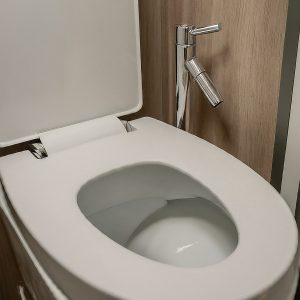
- Why: Ditch the toilet brush and hello to a sprayer attachment. This handy tool lets you clean the bowl more efficiently, using less water and reaching those hard-to-get spots. Plus, it’s a hygienic bonus for some!
- Where to Buy: Find sprayer attachments online at Amazon, Camping World, or RV parts stores. Look for brands like Thetford, Dometic, or Valterra. Prices vary depending on features and materials.
2. Unleash the Power of a Macerator:
- Why: If you crave convenience on extended trips, a macerator pump is your friend. This powerhouse grinds waste into a slurry, making it easier to pump into the holding tank and reducing the risk of clogs. Ideal for larger RVs or frequent boondocking.
- Where to Buy: Macerator pumps require professional installation, so consult qualified RV technicians or dealerships for options and pricing. Popular brands include Sanibest, Sealand, and Thetford.
3. Expand Your Holding Tank Territory:
- Why: Say goodbye to frequent dump station runs with a larger holding tank. This upgrade provides more freedom and convenience, especially for longer journeys or full-time RVing.
- Where to Buy: Installing a larger tank usually requires professional expertise. Discuss options and feasibility with RV technicians or dealerships. Consider the additional weight and potential modifications needed for your specific RV model.
Bonus Tip: Invest in a heated toilet seat for ultimate comfort during chilly weather. Many models are available with adjustable temperature settings and even built-in bidets for added luxury.
Remember: Before diving into upgrades, assess your needs and budget. Consider the size and usage of your RV, frequency of travel, and desired level of comfort. With the right choices, you can transform your RV toilet experience into a throne fit for royalty!
Additional Considerations:
- Compatibility: Ensure any upgrade is compatible with your existing RV toilet system and plumbing.
- Installation: Some upgrades require professional installation, so factor in labor costs.
- Weight and Space: Consider the added weight and potential space requirements of larger tanks or macerator pumps.
By carefully evaluating your needs and exploring these exciting upgrades, you can create a truly enjoyable and convenient RV toilet experience!
Location Considerations: Dumping Made Easy
The black tank valve’s location can significantly impact your RV toilet experience. Here’s what to know:
Valve Placement:
- Correct Side: Most dump stations have hoses on a specific side. Ensure your black tank valve is positioned on the same side to avoid awkward maneuvering.
- Accessibility: Choose an easily accessible valve location for quick and hassle-free dumping. Consider valves mounted on the bumper, side, or underneath, depending on your RV model.
- Multiple Tanks: Some RVs have separate black tanks for different areas, offering waste management flexibility on longer trips. Check your RV’s layout and valve configuration.
Dump Station Savvy:
- Apps for Convenience: Download an RV dump station locator app like “RV Dump Station Locator” to find nearby facilities and plan your route efficiently.
- Pre-Dump Check: Before dumping, ensure all connections are secure and tighten any loose fittings to prevent leaks.
- Responsible Disposal: Always follow dump station regulations and dispose of waste responsibly. Remember, what goes down the drain matters!
Your Next Steps:
Managing your RV toilet system is key to a comfortable and hygienic RVing experience. From choosing the right toilet type to strategic planning and responsible disposal, each step contributes to a smooth journey.
Key Takeaways:
- Choose Wisely: Select the right toilet type based on needs and budget.
- Operate Correctly: Master proper flushing and avoid flushing anything harmful.
- Maintain Regularly: Stick to a maintenance schedule for trouble-free operation.
- Use RV-Safe Products: Opt for products specifically designed for RV toilets.
- Consider Upgrades: Enhance your system with useful features if needed.
- Be Strategic: Pay attention to valve placement and utilize dump station locator apps.
- Dump Responsibly: Follow regulations and dispose of waste ethically.
Bonus Resources:
- Website for RV Toilet Maintenance: [Link to relevant website]
- Composting Toilets: Explore eco-friendly alternatives for waste disposal.
By considering these aspects and following best practices, you can ensure your RV toilet system functions optimally, making your RV adventures even more enjoyable!
Frequently Asked Questions
- Can I use regular toilet paper in my RV toilet?
- Answer: No, it’s best to use RV-specific toilet paper, as it breaks down more easily and helps prevent clogs in your holding tank.
- Is it safe to use household cleaning products in my RV toilet?
- Answer: It’s advisable to use RV-specific cleaning products to avoid damaging the seals or other components of your RV toilet system.
- Can I use biodegradable toilet chemicals? Are they effective?
- Answer: Biodegradable toilet chemicals are an eco-friendly option and can be effective, but it’s essential to ensure they are compatible with your specific RV toilet system.
- How do I clean and sanitize my black water tank?
- Answer: Use a specialized RV tank cleaning wand and appropriate tank cleaning chemicals to clean and sanitize your black water tank. Always follow the manufacturer’s instructions and guidelines.
- What are the signs that my RV toilet system needs immediate maintenance?
- Answer: Frequent clogs, persistent odors, and visible leaks are indicators that your system may need immediate attention.
- What should I do if my RV toilet is clogged?
- Answer: First, try using a plunger to clear the clog. If that doesn’t work, consider using a specialized RV toilet snake or seek professional assistance to avoid damaging your system.
- How do different altitudes or temperatures affect my RV toilet system?
- Answer: Changes in altitude can affect the air pressure in your holding tanks, while extreme temperatures can impact the effectiveness of cleaning chemicals and the flexibility of seals and hoses.
- Is it possible to retrofit my existing RV toilet for a more advanced system?
- Answer: Yes, many RV owners upgrade from a basic gravity flush system to more advanced options like macerating or vacuum flush systems. However, these upgrades may require professional installation and additional power sources
Resources
- Thetford Corporation’s official website: https://www.thetford.com/ Thetford is a leading manufacturer of RV toilets and accessories, offering valuable information and product recommendations for various needs and preferences.
- Dometic’s official website: https://www.dometic.com/ Dometic is another well-known brand in the RV industry, offering high-quality toilets, sanitation products, and resources designed for the mobile lifestyle.
- The RV Geeks’ YouTube channel: https://www.youtube.com/c/RVgeeks The RV Geeks provide helpful video tutorials, tips, and tricks for RV maintenance, including information on installing and maintaining RV toilets.
- The Leave No Trace Center for Outdoor Ethics website: https://lnt.org/ The Leave No Trace Center for Outdoor Ethics provides guidelines on responsible waste management and minimizing environmental impact when camping or boondocking.
- The National Park Service’s camping guidelines: https://www.nps.gov/subjects/camping/index.htm The National Park Service offers guidelines for RV camping, including information on waste disposal and environmentally-friendly practices in national parks and public lands.
Next Topic
Travel Safety and Preparedness

